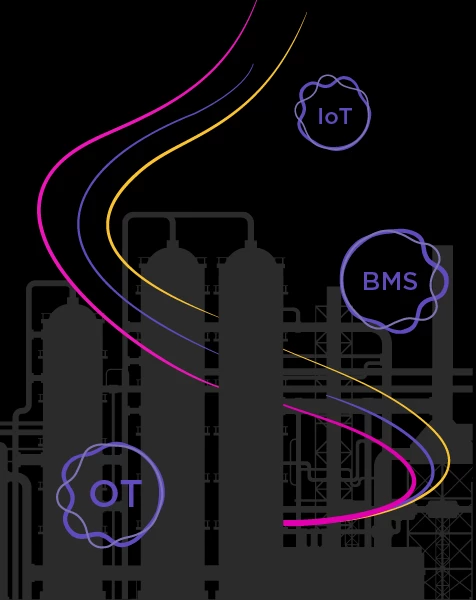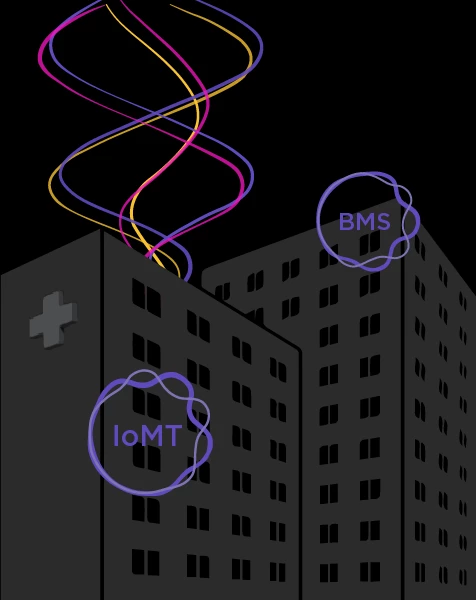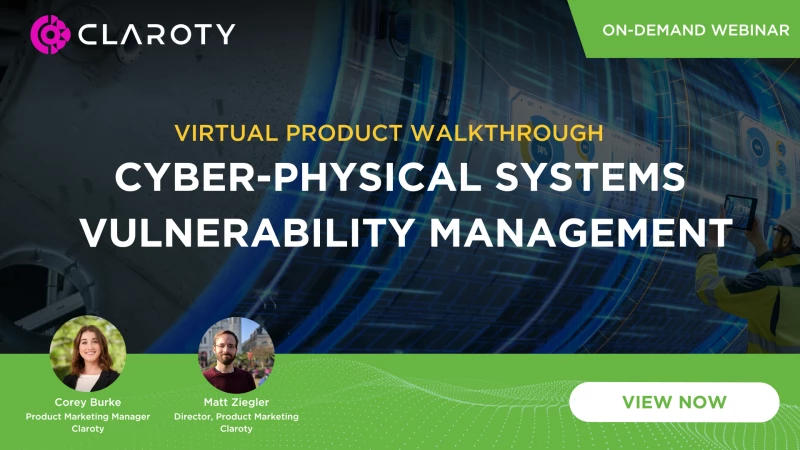.gif)
OUTCOMES
Boosting Cyber-Physical Systems (CPS) Risk Management
Claroty’s robust solutions help critical infrastructure organizations achieve CPS Risk Management with an approach tailored specifically to your unique needs.
.gif)
OUTCOMES
Claroty’s robust solutions help critical infrastructure organizations achieve CPS Risk Management with an approach tailored specifically to your unique needs.
Cybersecurity disciplines and personnel in all sectors share the same overarching goal: to reduce cyber risk. But for those in industrial, healthcare, and other critical infrastructure sectors where cyber-physical systems (CPS) underpin operations, that goal is spiraling out of reach.
The culprit is that the same CPS that provide better business and patient outcomes were not designed with security in mind and are increasingly vulnerable to cyber attacks. Further complicating the matter is that security operations teams are utilizing standard solutions and tools that were not designed for the challenge.
Traditionally, the standard solutions and conventional wisdom used to guide vulnerability prioritization are based on CVSS v3 severity scores — not based on exploit likelihood. This has caused often-already overburdened personnel responsible for managing CPS vulnerabilities to expend resources prioritizing those that are or will not ever be exploited.
Achieving and maintaining strong risk management amid challenging CPS security and risk conditions is far from impossible — but it does entail a robust set of requirements that simply cannot be satisfied by traditional solutions or generalized approaches. This is due to the following:

Since most standard solutions are incompatible with some of the proprietary protocols, legacy systems, and /or distinct complexities inherent in critical infrastructure environments, they cannot deliver the caliber of visibility required to assess risk within them accurately.
Standard solutions don’t account for the full scope of CPS environment’s compensating controls and risk factors in their calculations — and these gaps are only exacerbated by the visibility limitations mentioned above. As a result, the risk scores provided tend to be too high or too low.
Most standard solutions take a rigid “one-size-fits-all” approach to calculating risk. Although each CPS environment is unique, standard solutions rarely offer, if any, options for customers to customize how different risk factors are weighted based on what matters most to them. As a result, organizations cannot quantify their CPS risk posture in the true context of their business.
Having built and optimized cyber risk management capabilities for hundreds of global organizations over the past decade, Claroty knows firsthand what it takes to achieve cyber risk management as part of a CPS cybersecurity maturity journey. The following use cases show what this journey commonly looks like for our customers.
Asset discovery is the backbone of CPS risk management. We take this seriously, settling for no less than a complete, always up-to-date inventory of all your assets — including each asset’s full scope of identifiers and behavioral details. Achieving this visibility on your CPS risk management journey with Claroty typically entails:
Experiencing painless deployment and discovery
No matter your infrastructure, regulatory requirements, or stance on the cloud versus on-premises debate, our deployment and asset discovery options will arm you with full visibility in no time with no operational impact.
Amplifying the value of your XIoT asset inventory
CMDB and asset management tools are among many with which our integrations enable you to harness your asset inventory to optimize workflows enterprise-wide


Although every CPS environment is unique, most solutions offer few options to customize how risk factors are weighted based on what matters to an organization. We put a stop to this with a granular and flexible risk-scoring framework that accounts for an expanded range of factors that can increase risk, as well as compensating controls that can offset risk. Getting started usually encompasses:
Uncovering and remediating your risk blindspots
Our framework comes pre-configured out-of-the-box, so even customers who are new to CPS security can calculate their risk posture immediately and take prioritized actions to protect their operations.
Measuring and maturing your risk program
Customers can tailor our framework to align with existing GRC processes and risk priorities, and have greater control of how different factors are weighted in their CPS risk posture assessments – further empowering them to prioritize remediation steps appropriately.
Standard solutions and conventional wisdom tend to guide risk prioritization based on frameworks like the Common Vulnerability Scoring System (CVSS), rather than on exploitation likelihood or potential impact. This prioritization method has led many organizations’ often-already overburdened personnel to expend resources prioritizing risks that are unlikely to ever occur. Claroty solutions help by:
Prioritizing risk remediation based on quantified metrics and recommendations
Our platform provides a metric-driven approach to risk remediation, highlighting the number of devices and posture improvement that every action will have on your overall risk score.
Further optimizing mitigation guidance
With our risk simulator, customers can understand which CPS to prioritize within each group, whether they should consider existing controls, the effectiveness of applying a patch versus implementing other compensating controls, and utilize additional, deeper guidance to empower decision-making.

With the growing internal and external pressures that come with expanded connectivity and a growing attack surface, organizations must also account for the following:

As we noted earlier, many of the controls commonly used in IT environments aren’t feasible to implement for all CPS in all circumstances. Such limitations can vary widely across assets and environments, but common ones include vulnerability scanning, patching, and endpoint security.
The regulatory landscape has evolved considerably in recent years amid increases in the frequency and impact of cyber incidents affecting CPS environments. There are now more CPS-specific regulations than ever, so it’s crucial to track those relevant to your organization, their requirements for compliance, and how audits work.



Ready to get started on your path to operational resilience with Claroty?


